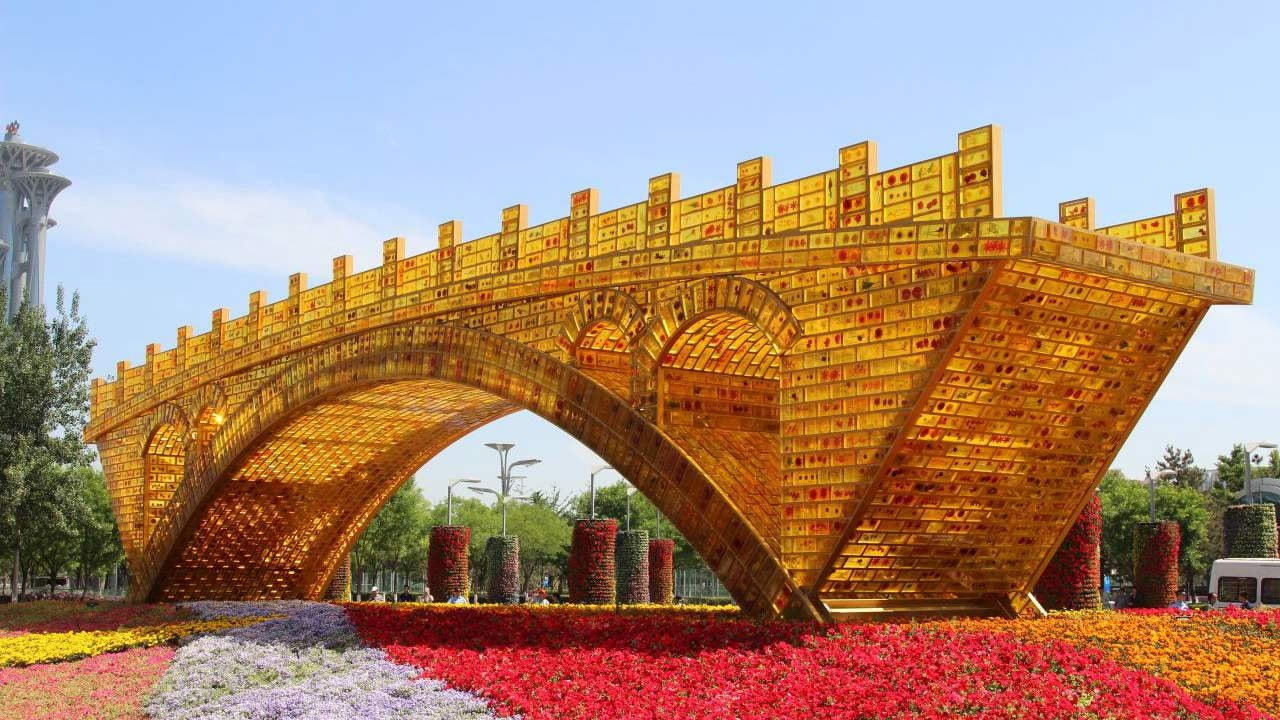
Opinion
20:42, 24-Apr-2019
BRI: A pathway to mutual prosperity
Updated
15:37, 26-Apr-2019
CGTN

Editor's Note: With the second Belt and Road forum for international cooperation kicking off this week, the BRI has been thrust into the media limelight. What has been achieved in the past five years since the initiative was first put forward? How to turn the BRI vision into reality? Five Years of the Belt and Road Initiative is a book series co-published by Chongyang Institute for Financial Studies, Renmin University of China and Foreign Language Press, analyzing the initiative from the perspectives of policy communication, infrastructure connectivity, trade connectivity, financial integration and people-to-people connectivity. Here is an excerpt of the episode on trade connectivity.
As the largest trading partner of more than 128 countries, China is the largest country by trade in goods and the second largest by trade in services. Since its launch in 2013, the Belt and Road Initiative (BRI) has created a new pattern of trade and investment and instilled fresh momentum to the world economy.
The BRI's role in promoting trade freedom can never be underestimated. From 2013 to 2017, the total import and export volume between China and the BRI countries reached 7 trillion U.S. dollars. The figure was 1.4 trillion U.S. dollars in 2017 alone, an increase of 13.4 percent, higher than China's foreign trade growth rate of 5.9 percent. As of October 31, 2018, China's investment in the BRI countries amounted to 84 billion U.S. dollars.
The BRI also means an acceleration of negotiations on bilateral and multilateral free trade agreements. By June 2018, China had reached 16 free trade agreements with 24 countries and regions, providing institutional guarantees for trade freedom among all parties concerned.
Moreover, China has been actively promoting the Regional Comprehensive Economic Partnership and China-Japan-ROK Free Trade Area Negotiations. Under the BRI, China has clinched an economic cooperation deal with the Eurasian Economic Union, completed joint research with Russia on the Eurasian Economic Partnership Agreement, and conducted a joint strategic research of the Free Trade Area of the Asia Pacific.

Belt and Road landscape sculpture in Beijing. /VCG Photo
Belt and Road landscape sculpture in Beijing. /VCG Photo
Customs clearance is another key factor determining trade freedom and connectivity. By the end of 2017, one-stop service had been available for all customs procedures in China, cutting the time for import and export customs clearance by 36.7 percent and 38.9 percent respectively year-on-year. The cost of customs clearance for goods in the central and western regions has dropped by an average of 20 percent to 40 percent.
As of October 31, 2018, China had signed Authorized Economic Operator agreements with Japan, New Zealand, Australia, Singapore, the ROK, the EU and Hong Kong SAR, providing a convenient customs clearance environment in mutually recognized countries and regions for China's high-credit firms.
Thanks to the BRI, China is gradually building a network of high-standard free trade zones. In December 2014, one year after the Shanghai Free Trade Pilot Zone was put into operation, Tianjin, Guangdong and Fujian free trade pilot zones were established. In August 2016, Liaoning, Zhejiang, Henan, Hubei, Chongqing, Sichuan and Shaanxi also witnessed the establishment of free trade zones.
Statistics from China's Ministry of Commerce suggests that the ratio of free trade in goods with Chile, New Zealand, Singapore, Costa Rica, Iceland, Australia and other countries has reached more than 95 percent.

China-Europe Railway Express. /VCG Photo
China-Europe Railway Express. /VCG Photo
In the era of Internet, cross-border e-commerce is carrying increasing weight on global trade. Under the BRI, China had signed agreements on e-commerce cooperation with 14 countries and regions as of December 2018. The number of people frequently shopping online for foreign products in China reached 75 million at the first half of 2018, according to China Internet Network Information Center.
Cross-border e-commerce has also led to advancements in payment settlement, logistics, customs clearance and so forth. In 2015, China and Russia opened a cross-border e-commerce customs clearance service platform. For the first time, customs clearance, payment and tax refunds for cross-border e-commerce exports to Russia has been realized, reducing three to five days of clearance time to about 15 minutes.
International capacity cooperation under the BRI framework is also a boon for global industrial and value chains, the maturity of which is a prerequisite to global trade connectivity. Take the China-Kazakhstan cooperation as an example. The two countries have established a fund of 2 billion U.S. dollars for capacity cooperation.
More than 50 programs have been completed in advance, covering chemical, automotive, metallurgical, and agricultural fields. This helps upgrade Kazakhstan's industrial system and thus further improves trade connectivity.
Via the BRI, a slew of countries and international organizations have been involved in China's trade network and are riding China's BRI express for multi-win economic cooperation.
Stories in this series:
(If you want to contribute and have specific expertise, please contact us at opinions@cgtn.com.)

SITEMAP
Copyright © 2018 CGTN. Beijing ICP prepared NO.16065310-3
Copyright © 2018 CGTN. Beijing ICP prepared NO.16065310-3